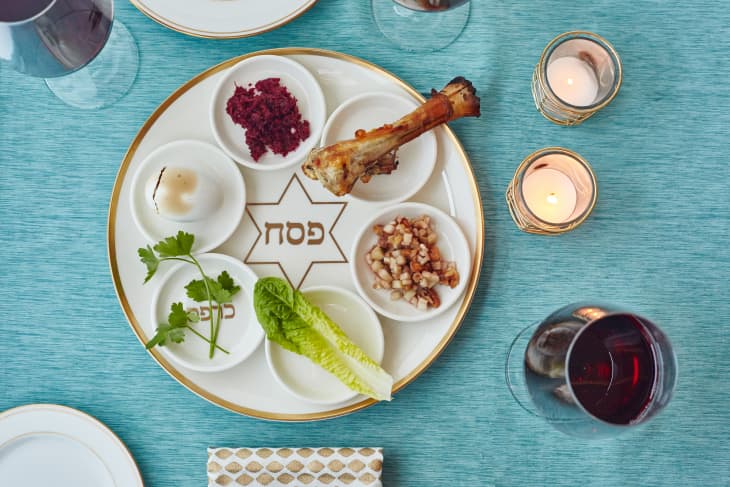A Break Down of the Passover Seder Plate
Those who practice the Jewish religion celebrate Passover in order to remember and honor their enslaved ancestors in Egypt. The holiday is celebrated with a seder: a multi-part dinner in which each component relates to the Jews’ time in Egypt. Some examples include placing a drop of wine on a plate for each of the ten plagues, searching for the afikomen, and leaving a glass of wine for Elijah the Prophet. The most notable symbolic element of the sedar is the seder plate, consisting of five to six items, each with their own significance. For those who don’t celebrate the holiday, a description of each item is provided below!
Shank Bone/Zeroa: On the night that the Angel of Death (the 10th plague) took the lives of each first born son, Moses relayed the message from God to the Jewish people to mark their doors with sheep blood, signaling to the angel to pass over their home. This act is where the name “Passover” comes from. Fun, right? The shank bone on the seder plate represents the bone of the sheep whose blood was used to protect the Jewish families.
Egg/Beitzah: The Egg (either hard-boiled or roasted) on the plate represents rebirth and the roundness of the egg symbolizes that circle of life.
Charoset: Charoset represents the mortar used by the Jewish people to build pyramids while they were enslaved. At a point during the meal, those participating make a sandwich out of matzah and charoset, symbolizing the building of the pyramids; the charoset is the mortar and the pieces of matzah are the bricks. Charoset is a mixture traditionally made from nuts, apples, cinnamon, and sweet red wine-it’s delicious.
Parsley/Karpas: Parsley, being a green vegetable, is used to represent the initial growth and flourishing on the Jewish people when they first arrived in Egypt. It is also a symbol of the coming of spring and new beginnings. During the meal, the parsley is dipped in saltwater which emulates the tears of the Jewish slaves.
Bitter Herb/Maror: The bitter herb (typically horseradish) is on the plate to represent the bitterness and suffering the Jews faced in Egypt.
Romaine Lettuce/Chazeret: Lettuce is a newer addition to the festivities, so not all families include it. Those who do include lettuce use it in addition to or instead of the bitter herb. It symbolizes the fact that the Jews’ life in Egypt started out soft and ended bitter and hard.
Matzah: Matzah does not actually have a place on the seder plate, but it gets a shout out because it is still an important and symbolic part of the meal. Jewish people eat matzah on Passover because the Jewish Slaves leaving Egypt did not have time to wait for their bread to rise before they left, due to the fear that the Pharaoh would change his mind if they didn’t get out quickly. Over Passover, an 8 day holiday, Jews don’t eat any risen bread product in order to pay respect to their ancestors.
Passover is one of the most meaningful holidays in the Jewish faith, so it’s important to understand the elements of the holiday and all of its symbolism.


